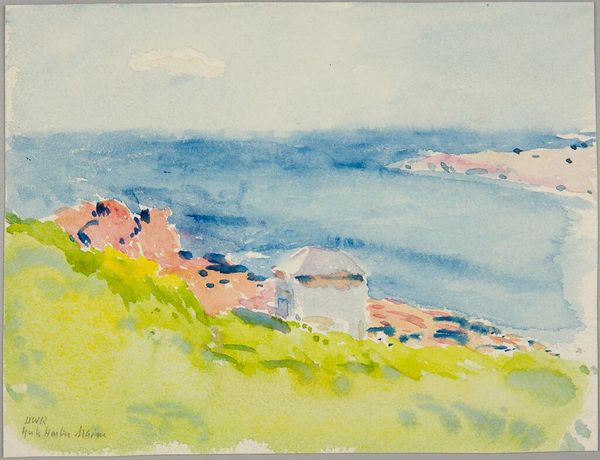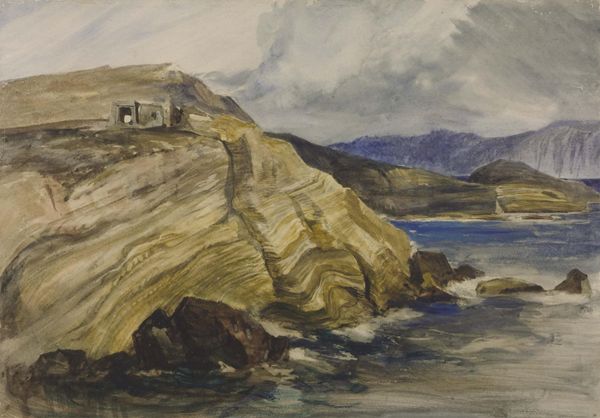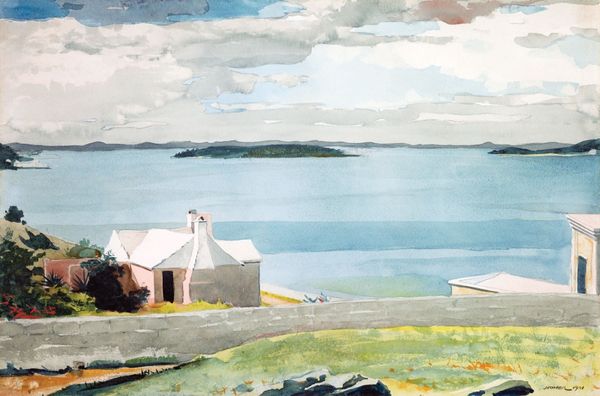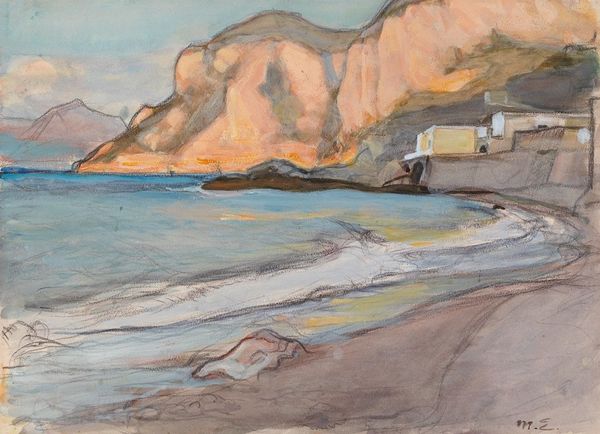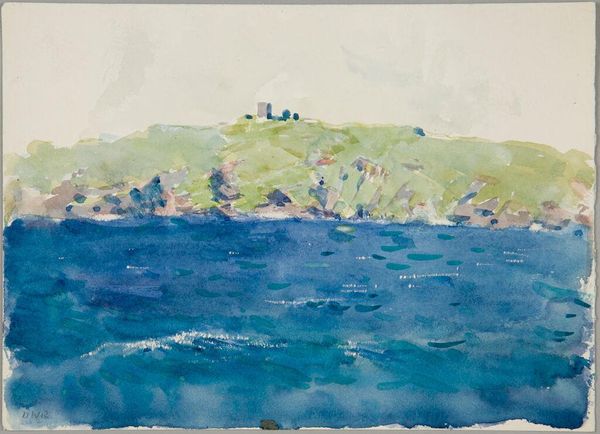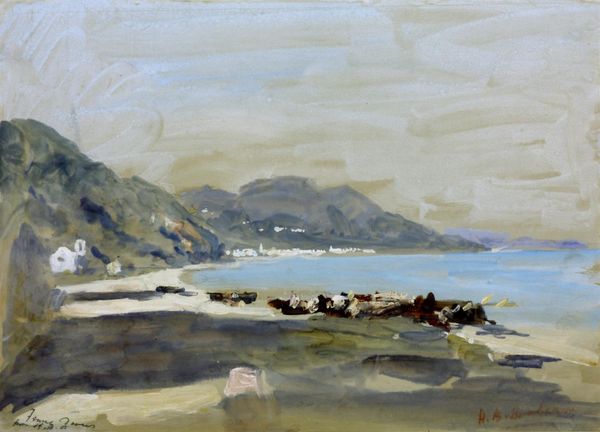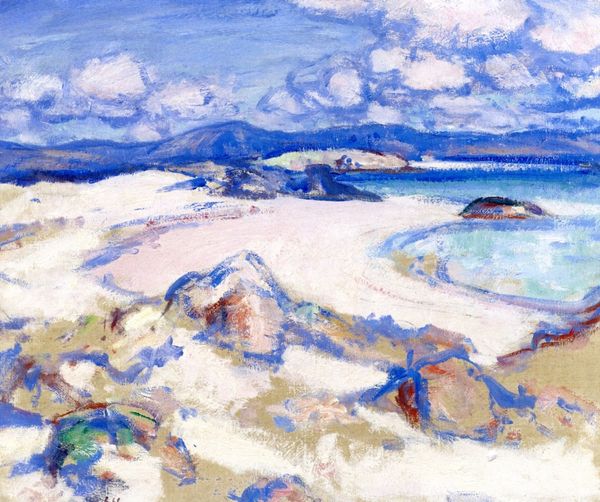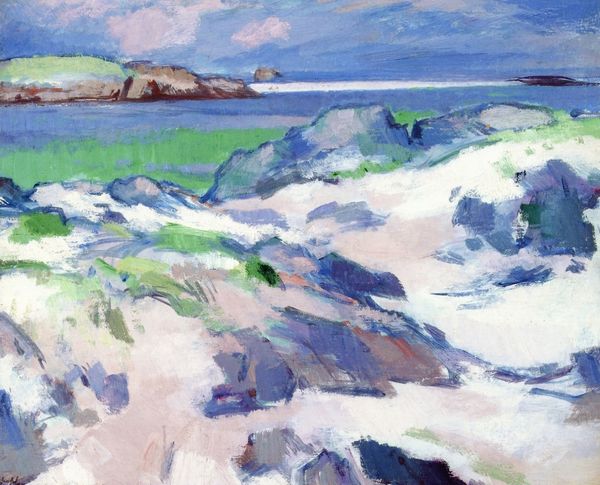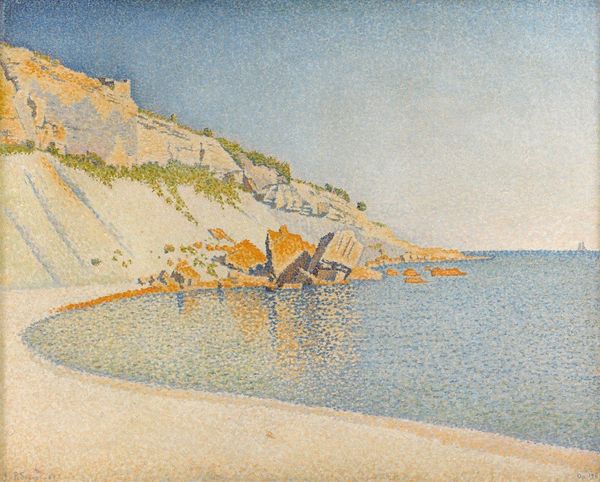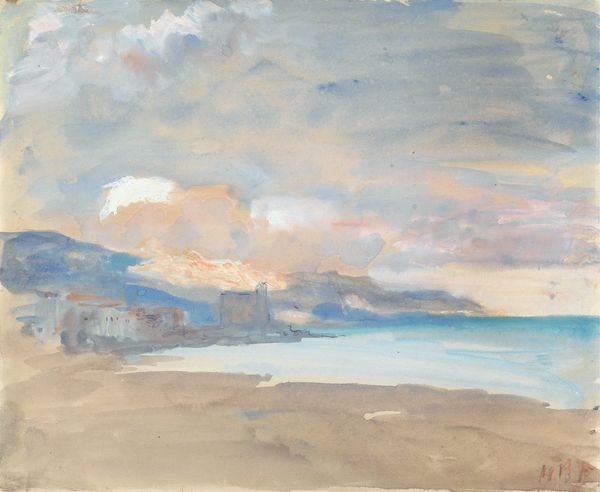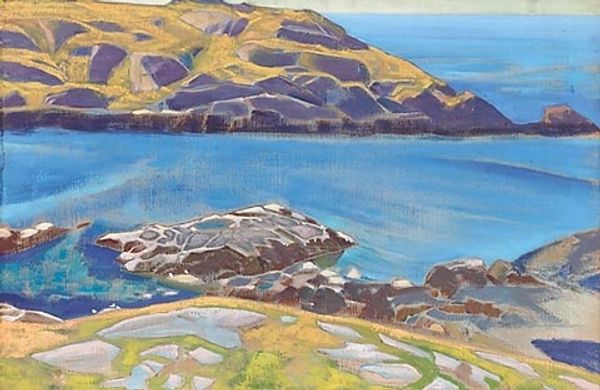
Seamen’s Chapel, St Ives 1959
0:00
0:00
ritaangus
Christchurch Art Gallery Te Puna o Waiwhetū, Christchurch, New Zealand
Copyright: Rita Angus,Fair Use
Curator: Welcome. We are standing before Rita Angus's "Seamen’s Chapel, St Ives," created in 1959. Editor: It has this incredibly calming yet melancholic quality. The muted colors and soft textures give it a sense of tranquility, almost like a faded memory. Curator: Precisely. Note the carefully balanced composition, where the jug is placed strategically in the lower right-hand corner. Angus’s use of line is fascinating too, defining the contours and contributing to the overall structure. We observe subtle color modulations within the landscape itself. The sky isn't a single wash but varied tonalities that evoke the coast. Editor: But this chapel…it dominates the landscape. A constant reminder that this quaint seascape is built atop legacies of those who perish in the sea. A romantic seaside view now seems laced with human costs. We see it in our global economy today too – a focus on aesthetics can distract us from exploitation and tragedy, the lives lived in precariousness for picturesque postcards. Curator: That’s a very contemporary reading. I appreciate you bringing the global dimension to our appreciation of art. I would venture to add a biographical perspective: Angus's own pacifist beliefs likely influenced her choices. Perhaps she saw the chapel, not as a marker of loss, but a beacon of hope amidst strife. This painting becomes an articulation of seeking harmony during difficult times. Editor: It is hard to overlook the ways these landscapes have been central to constructing British national identity, where concepts of the pastoral and sublime function as distractions from complex colonial legacies. That horizon we’re invited to contemplate carries with it so much more than aesthetics, and impacts who can make claims of belonging. Curator: And yet the image persists as its own reality, distinct from these global forces you speak of. Still, you remind me of our role as not just appreciating beauty, but engaging the forces around that creation. Editor: Precisely. It is work. I’m left thinking about our relationship to place. Curator: For me, I am reminded of the lasting effects and meanings art has for all, inviting new dialogues and conversations with each interaction.
Comments
No comments
Be the first to comment and join the conversation on the ultimate creative platform.
